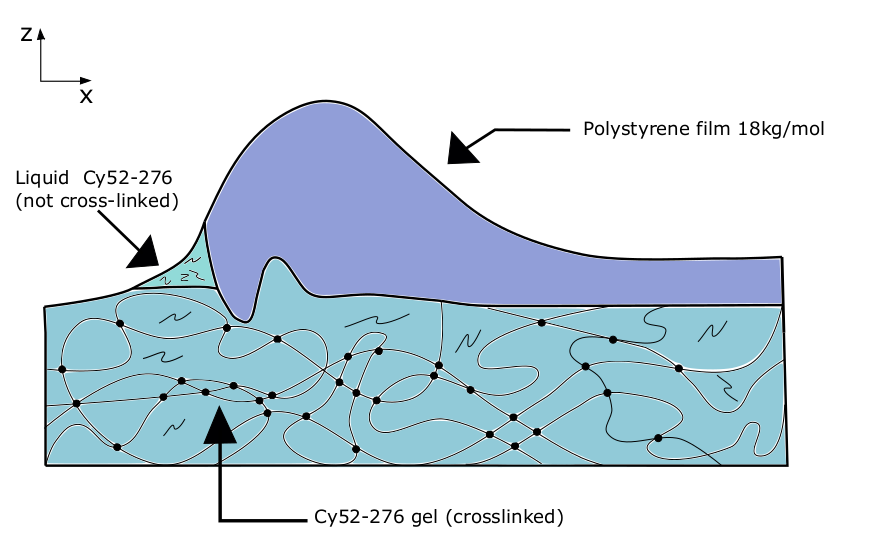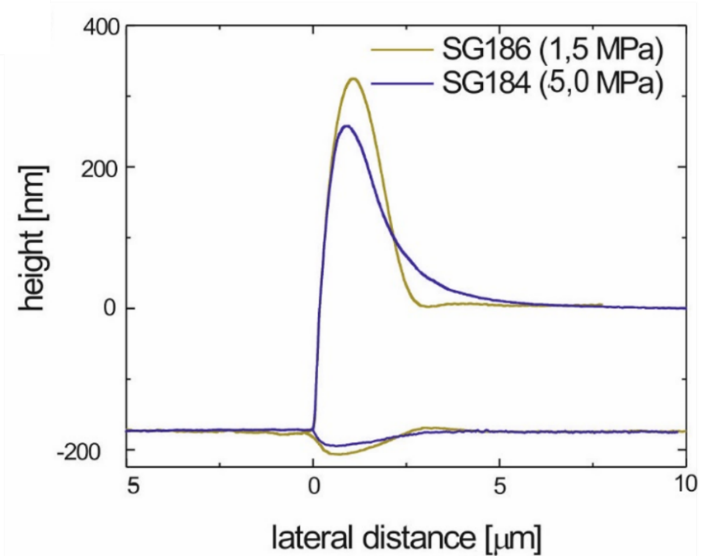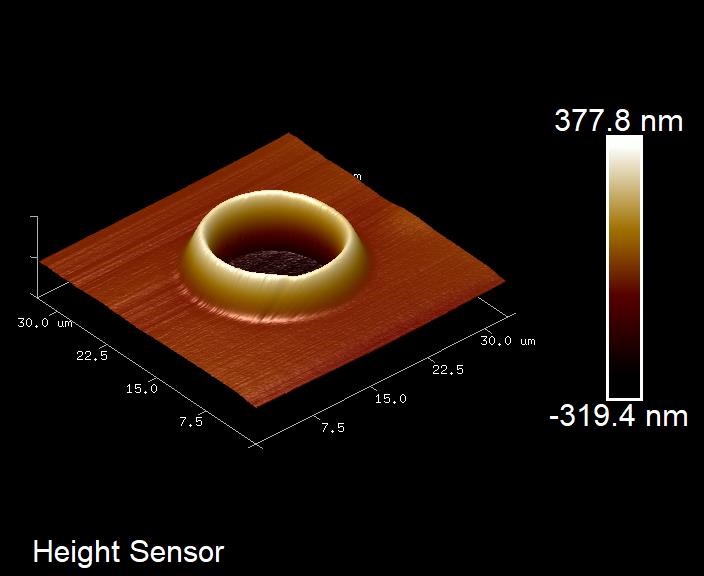AG Prof. Dr. Ralf Seemann
| |
|
In this combined experimental and theoretical project (with B. Wagner, WIAS), we are concerned about problems where a thin liquid film (or droplet) retracts from a viscoelastic substrate. The dewetting dynamics from viscoelastic substrates poses many open questions including the behavior of the contact angle at the three-phase contact line, the dewetting rim and trench and the shape of the droplet in equilibrium.
In our experiments we vary the elasticity of the elastic substrate by more than three orders of magnitude using PDMS rubbers such as Sylgard 184, Sylgard 186 or gels like (Cy52-276) to explore those processes at the nanoscale using atomic force microscopy. Such gels typically also contain a fraction of un-cross-linked PDMS chains that may lead to stress induced phase separation, which we propose to occur at the contact line with liquid layer or droplet. This is sketched in Fig.1.

To capture this phenomena the group of B. Wagner couples a model for a hydrogel that includes interfacial energy, with a model for a liquid viscous layer. The hydrogel model, which combines a network of cross-linked polymer chains and a liquid (not cross-linked) accounts for nonlinear (Neo-Hookian) elastic energy of the network, a mixing energy.


Group members on this project: Brahim El-Khalil Remini, Prof. Dr. Ralf Seemann
External collaborations: Barbara Wagner, Dirk Peschka, Leonie Schmeller (WIAS, Berlin)
Funding: SPP2171 Dynamic wetting of flexible, adaptive and switchable surfaces